As the early morning light filters through the window, the unmistakable aroma of coffee wafts through the air. For many, it’s the nudge needed to kickstart the day, for others, it’s a treasured ritual, symbolizing calm and comfort. But amid this enchanting experience, have you ever paused to consider how we might be squandering precious coffee grounds each time we brew? While our love for this beloved beverage is nearly universal, the amount of coffee waste we produce is less savored. One may wonder, how many times can you use coffee grounds for brewing coffee? In this article, we will dive deep into this question, exploring the boundaries of maximizing your brew and reducing waste. By investigating optimal usage and brewing techniques, we will help transform your morning ritual into an environmentally-friendly practice that doesn’t compromise on taste or quality.
Can You Use Coffee Grounds Twice? – Key Takeaway
- Savor a Second Brew: Coffee grounds can be used for a second brew, offering a milder, yet still enjoyable flavor profile.
- Explore Beyond the Cup: Used coffee grounds have a variety of applications beyond just brewing coffee, including DIY beauty products, garden enhancement, and cleaning solutions.
- Sustainability in Your Cup: By reusing or composting coffee grounds, and engaging with recycling programs, you can contribute to more sustainable coffee consumption and waste reduction.
- Community Connections: Building partnerships between coffee shops and local farms or community gardens offers a symbiotic solution for recycling coffee grounds and fostering sustainability.
- Debunking Misconceptions: While there are concerns about reusing coffee grounds, such as potential mold growth and reduced caffeine content, these can be managed with appropriate storage and quick use, ensuring safety and enjoyment.
Exploring the Reusability of Coffee Grounds
Coffee grounds, once believed to be spent after a single use, can have more to give. But the question remains, how far can we push their utility without compromising our beloved cup of joe? To unravel this, we need to dive into the world of coffee composition, consider the factors affecting reusability, and understand the impact this practice might have on flavor and aroma.
Understanding the Composition of Coffee Grounds
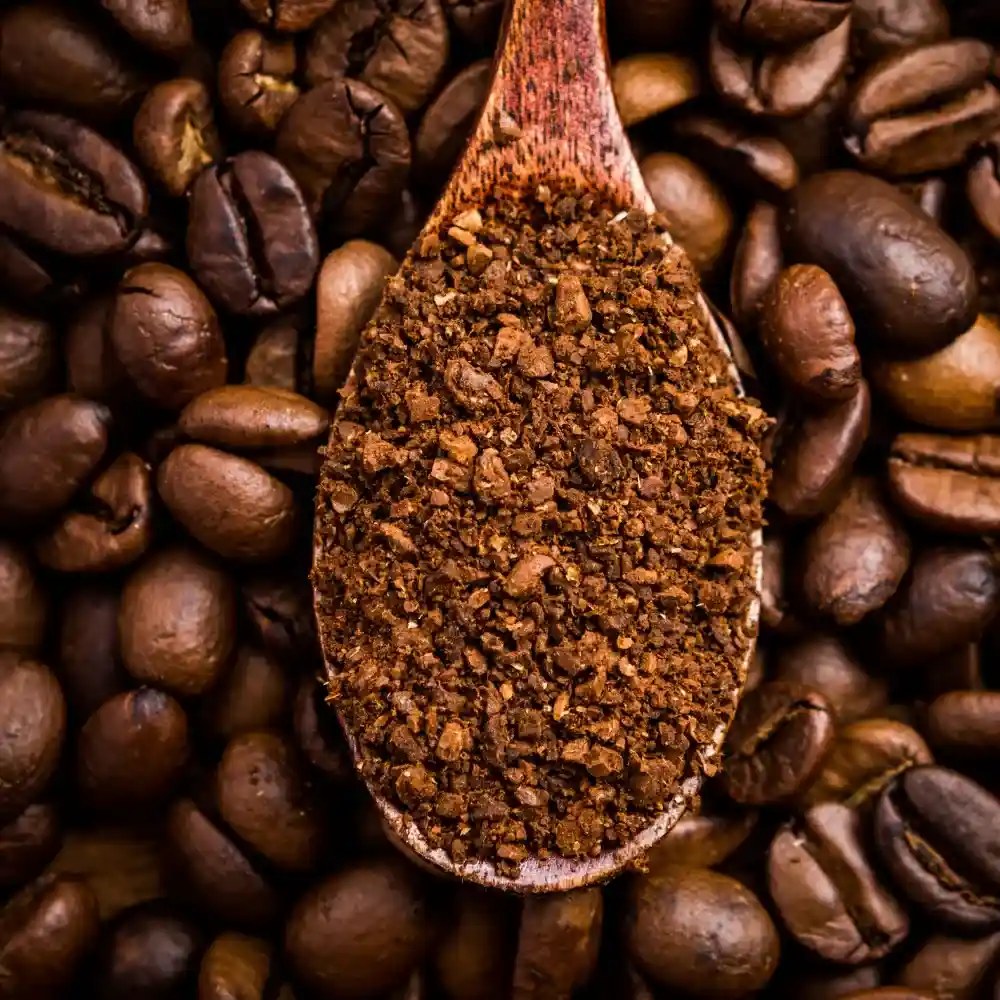
To fully appreciate the potential of coffee grounds, we first need to delve into their composition. Coffee beans are dense with compounds that make your morning cup both tasty and stimulating.
- Caffeine: This is the stimulating component that kick-starts your day. Once coffee has been brewed once, a good amount of caffeine is already extracted, but not all. The remaining caffeine content in used coffee grounds depends on the brewing method and duration.
- Flavor compounds: Coffee’s rich flavor comes from hundreds of volatile compounds. During the first brew, many of these compounds are extracted, but some remain trapped within the ground particles, potentially available for subsequent uses.
- Oils and acids: These contribute to the mouthfeel and brightness of the coffee, respectively. However, they can become bitter or rancid when exposed to air and heat for extended periods.
Evaluating the Factors Affecting Coffee Ground Reusability

The extent to which coffee grounds can be reused is determined by several key factors:
- Brewing method: Different brewing methods extract coffee compounds at different rates. For example, espresso machines work under high pressure, leading to a more exhaustive extraction compared to a gentle French press brew.
- Brewing time: The longer grounds are exposed to hot water, the more compounds are extracted. Consequently, a quick brew may leave more reusable compounds in the grounds than a slow steep.
- Grind size: Finer grinds expose more coffee surface area to the water, facilitating extraction. Thus, coarsely ground coffee might retain more reusable components.
- Storage conditions: Used coffee grounds can go rancid due to oxidation. Therefore, it’s essential to store them correctly, in an airtight container, and preferably in a cool, dark place.
Assessing the Impact on Flavor and Aroma
The last piece of the puzzle lies in the sensory experience. Reused grounds can still make coffee, but how does it taste? And what does it smell like?
- Flavor: You’ll likely find that coffee made from reused grounds is less robust, with muted flavors. This is because most of the flavor compounds get extracted in the first brew. However, depending on your personal taste, you might still find the resulting brew enjoyable, particularly if you prefer a lighter, more delicate coffee.
- Aroma: Much of the aroma is lost in subsequent brews. The aromatic compounds are highly volatile and tend to dissipate quickly. However, there will still be a recognizable, albeit less intense, coffee aroma.
By understanding these aspects, we can maximize the utility of our grounds, all while keeping a keen eye on sustainability. While the brew might differ from your usual, you may find joy in the novel, subtler flavors, or simply relish the fact that you’re reducing waste.
Maximizing Flavor in Reused Coffee Grounds
While reusing coffee grounds inherently results in a lighter, less robust brew, there are ways to make the most out of your second brew. From choosing the right coffee beans to learning how to store coffee properly, there are strategies you can implement to retain the most flavor possible. Finally, by adjusting brewing parameters, you can enhance the taste and aroma of your recycled grounds.
Choosing the Right Coffee Beans for Multiple Brews
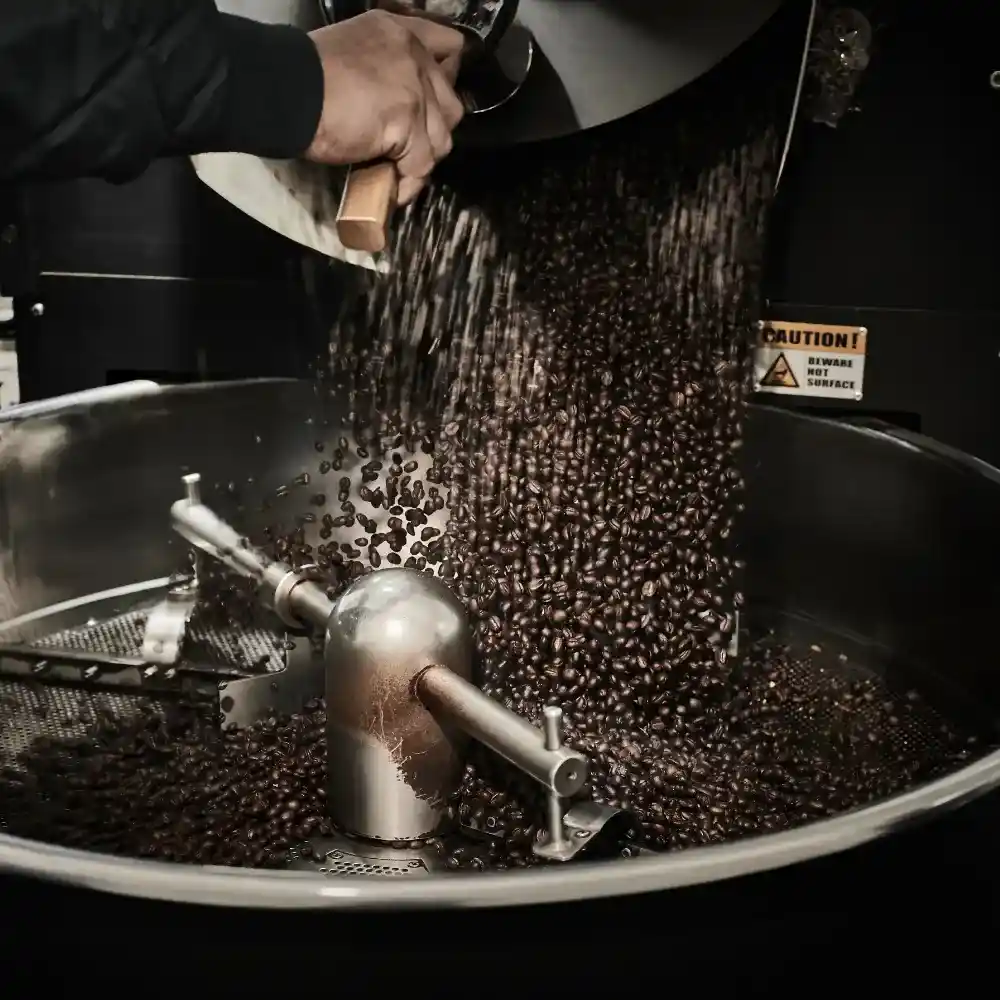
Selecting the right type of coffee beans can have a significant impact on the flavor profile when reusing coffee grounds.
- Robusta beans: These beans have a higher caffeine content than other varieties, meaning more caffeine remains even after the first brew. They also have a strong, distinctive flavor that can stand up to multiple brews better than more delicate types.
- Dark roast: Dark-roasted beans have a more intense flavor and a robust body, which can persist in subsequent brews better than lighter roasts. While some of the nuanced tasting notes might be lost, the bold flavors can still come through.
- Whole beans: Opt for whole beans and grind them just before brewing. Pre-ground coffee loses flavor more quickly due to the larger surface area exposed to air.
Storage Tips for Retaining Freshness
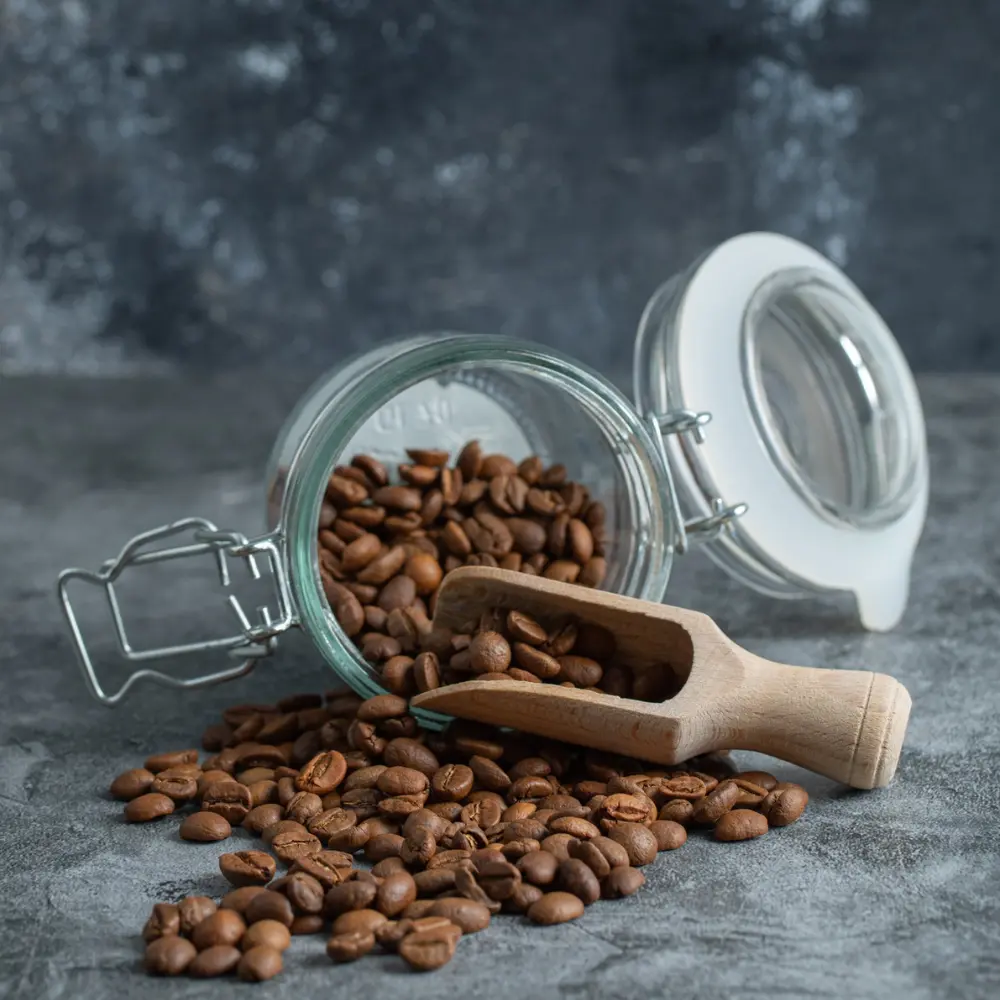
The way you store your coffee can impact its longevity and the quality of subsequent brews. Here are some essential tips on how to store coffee properly to maintain its freshness:
- Airtight containers: After brewing, transfer the used grounds to an airtight container as soon as they cool down. This prevents exposure to oxygen, which can lead to staleness.
- Cool and dark place: Coffee is sensitive to light and heat, which can degrade its quality. Storing your grounds in a cool, dark place can help preserve their remaining flavor compounds.
- Short-term storage: The quality of used grounds deteriorates with time. Aim to reuse the grounds within 24 hours to get the best results.
Adjusting Brewing Parameters for Optimal Flavor
The way you brew your coffee can also affect the flavor of reused grounds.
- Increase brewing time: Given that reused coffee grounds have fewer compounds left to extract, it can help to let them steep for a bit longer than usual to extract as much flavor as possible.
- Increase the quantity: Using more grounds than usual can also help compensate for the loss of flavor. This could mean topping up your reused grounds with a small amount of fresh ones.
- Brewing temperature: Lowering the brewing temperature slightly can prevent over-extraction, which can lead to a bitter brew. Try dropping the temperature by a few degrees and see how it affects the flavor.
By adopting these strategies, you can make the most out of your reused grounds. It’s not just about making your beans go further—it’s about changing habits, reducing waste, and enjoying the simple pleasure of a well-brewed cup of coffee.
Creative Uses for Spent Coffee Grounds
When it comes to reusing grounds, brewing another cup isn’t your only option. These aromatic leftovers can find a second life in numerous ways, adding a touch of creativity and sustainability to your daily routine. From DIY beauty and skincare products like homemade coffee scrubs to enhancing your garden and even aiding in household cleaning, the potential uses for used coffee grounds are plentiful.
DIY Beauty and Skincare Products
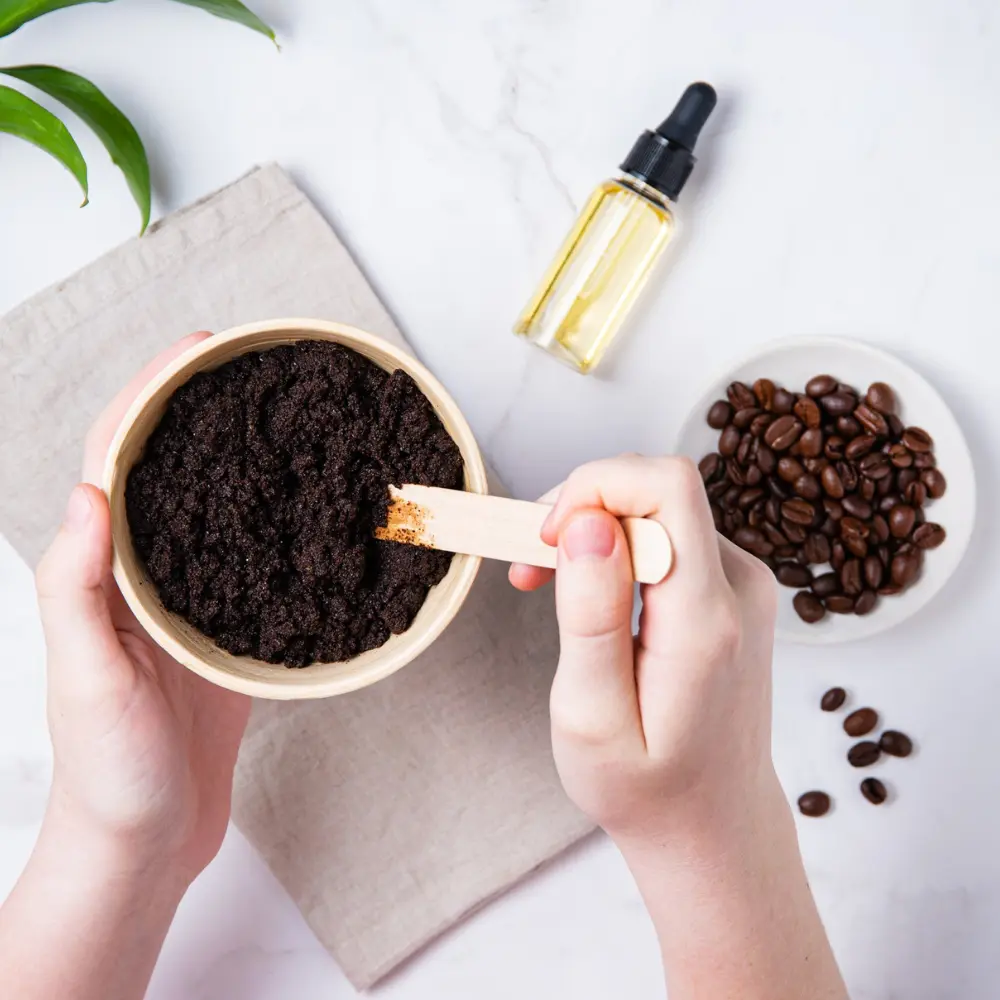
For beauty enthusiasts, spent coffee grounds can be an excellent addition to your skincare regime. Their gritty texture coupled with their rich antioxidant properties make them a popular choice for exfoliation and nourishment.
- DIY coffee scrub: Combine equal parts of spent grounds, sugar, and a skin-friendly oil like coconut or olive to create a simple, yet effective body scrub. This mixture helps exfoliate dead skin cells, leaving your skin smooth and rejuvenated.
- Coffee-infused hair mask: The antioxidants in coffee can potentially help strengthen hair and boost shine. Mix coffee grounds with a carrier oil, like coconut or olive oil, and apply to your hair for a nourishing mask. Rinse thoroughly after letting it sit for 15-20 minutes.
- Under-eye treatment: Coffee is known for its anti-inflammatory properties, which can help reduce under-eye puffiness. (1) Mix the grounds with a small amount of coconut or olive oil and apply the mixture gently under your eyes. Rinse thoroughly after 5-10 minutes.
Enhancing Your Garden with Coffee Grounds

Your garden can also benefit from the hidden virtues of used coffee grounds.
- Compost additive: Used grounds are rich in nitrogen, making them a beneficial addition to compost piles. The grounds help to create a balanced carbon-to-nitrogen ratio, crucial for successful composting. (2)
- Pest deterrent: Some pests, like slugs and snails, are deterred by coffee grounds. Sprinkle them around plants as a natural pest barrier.
- Soil amendment: Mixing the grounds into your soil can help improve its structure and increase its nutrient content. Be cautious though, as too much can negatively impact some plants.
Alternative Cleaning Solutions
Finally, those used coffee grounds can be transformed into effective cleaning tools for your home.
- Abrasive scrub: The coarse texture of the grounds makes them suitable for scrubbing hard-to-clean kitchenware. They can help remove stubborn grime from pots, pans, and surfaces.
- Odor neutralizer: Coffee grounds are excellent at absorbing odors. Place a small bowl of dry grounds in your refrigerator or another area where odors linger.
- Fireplace cleaner: Scattering damp grounds over the ashes in your fireplace can help weigh them down, preventing dust clouds when you sweep.
Through these creative uses for used coffee grounds, you can find novel ways to reduce waste and find innovative applications for this common household item. So, the next time you finish brewing your coffee, think twice before discarding the grounds!
Sustainable Coffee Practices and Waste Reduction
Embracing sustainable coffee practices goes beyond simply reusing or recycling your coffee grounds at home. The coffee industry, from cafes to roasteries, produces a substantial amount of coffee waste. Therefore, taking measures to incorporate sustainable practices into our coffee culture can have a significant impact. By composting coffee grounds for organic fertilizer, partnering with local farms and community gardens, or engaging with coffee ground recycling programs, we can make our love for coffee a force for good.
Composting Coffee Grounds for Organic Fertilizer

One of the easiest and most effective ways to repurpose your grounds is by turning them into organic fertilizer through composting. As mentioned before, coffee grounds are rich in nitrogen, a crucial element for composting that aids in the breakdown of organic materials into nutrient-rich soil.
- Balance the compost pile: For a successful compost pile, it’s important to maintain a good balance between green materials (rich in nitrogen) and brown materials (rich in carbon). The grounds act as a green material and can help balance out brown materials like dried leaves, straw, or paper.
- Avoid excessive acidity: Coffee grounds are somewhat acidic, so avoid adding too many to your compost pile to prevent it from becoming too acidic for most plants.
- Spread the grounds: Layer or mix the grounds into your compost pile to prevent them from clumping together. Clumps of used grounds can become compact and slow the composting process.
Partnering with Local Farms and Community Gardens

For larger coffee shops and roasters, partnering with local farms and community gardens can be an excellent way to recycle spent grounds. This sustainable coffee practice provides several benefits:
- Rich soil additive: Like composting at home, coffee grounds can add vital nutrients to farm soils, improving their fertility and structure.
- Sustainable relationship: Establishing these partnerships creates a symbiotic relationship where coffee businesses can reduce their waste and contribute positively to their community, while farms and gardens receive a regular supply of valuable organic material.
- Community engagement: This practice fosters community ties and raises awareness of sustainability issues, highlighting the importance of waste reduction and resource optimization.
Exploring Coffee Ground Recycling Programs
With coffee being one of the most consumed beverages worldwide, several initiatives and programs have sprung up to address the environmental impact of coffee waste. These innovative programs offer solutions at both individual and commercial levels:
- Municipal composting programs: Some cities and towns offer composting programs where residents can drop off their used coffee grounds.
- Commercial recycling programs: Certain companies specialize in collecting coffee waste from businesses, which is then converted into biofuels or other valuable products.
- In-store collection: Some coffee shops have implemented programs where customers can return their used coffee capsules or pods for recycling.
In summary, sustainable coffee practices can significantly reduce waste, contribute to a healthier environment, and foster community engagement. By making small changes to our coffee habits, we can collectively make a big difference. So next time you enjoy your cup of coffee, remember – every ground matters!
Common Concerns and Misconceptions
Reusing grounds is an idea that raises a number of questions and concerns. How safe is it to use spent coffee grounds, considering potential mold and bacterial growth? What happens to the caffeine content when you reuse the grounds? And how do we balance the environmental benefits of reusing grounds with potential flavor trade-offs? In this section, we’ll address these common concerns and dispel some misconceptions about reusing used grounds.
Mold and Bacterial Growth in Reused Coffee Grounds
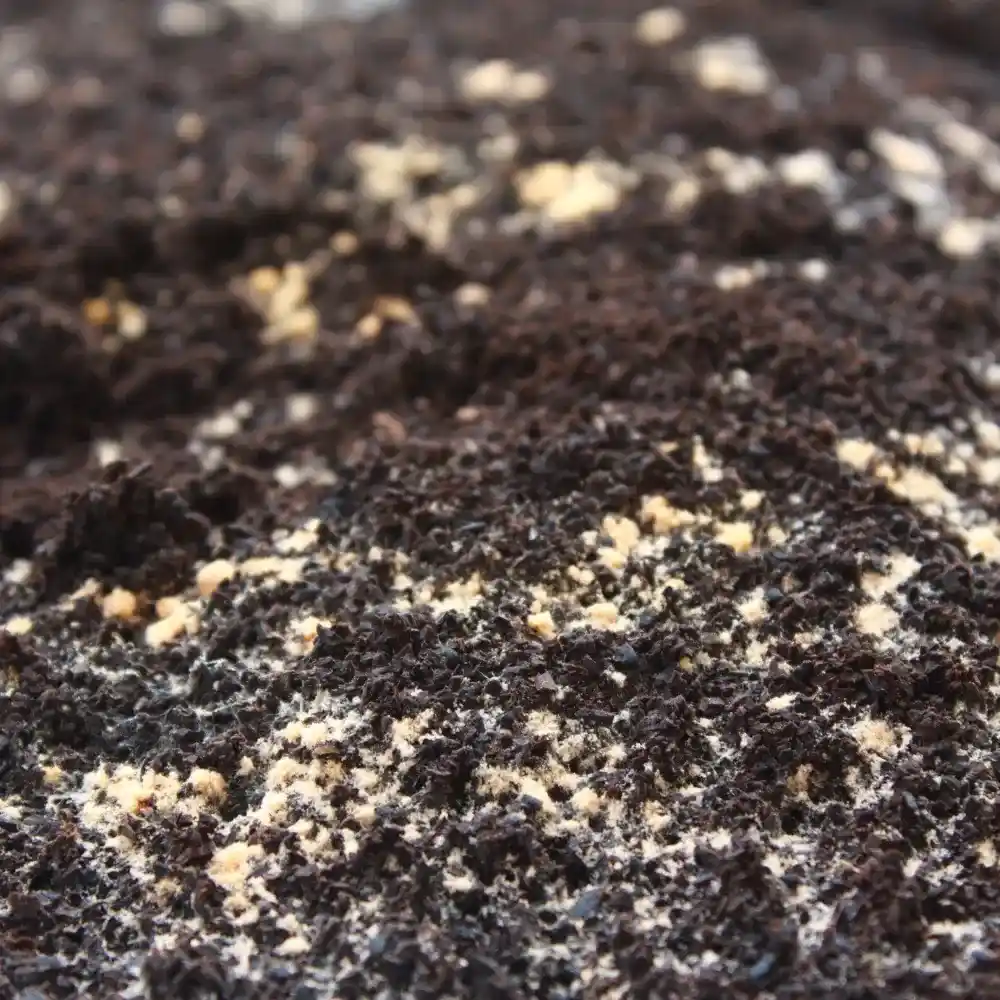
One of the common concerns about reusing coffee grounds is the risk of mold and bacterial growth. Indeed, coffee grounds are a food substance, and like any food substance, they can spoil if not stored properly. However, by taking certain precautions, you can safely reuse your grounds:
- Prompt storage: As discussed, as soon as you finish brewing, store the used grounds in an airtight container to prevent exposure to air, which can accelerate spoilage.
- Cool storage: Store your container of used grounds in a cool place, ideally in the refrigerator. This will help slow down bacterial growth and keep the grounds fresh for longer.
- Quick use: As mentioned, aim to reuse the grounds within 24 hours of the first brewing. The longer you wait, the higher the risk of mold and bacteria growth.
Impact of Reusing Coffee Grounds on Caffeine Content
Another question often raised is about the caffeine content. Does reusing coffee grounds mean you’re getting more caffeine? The answer is generally no. While not all the caffeine is extracted during the first brewing, a significant amount is, especially with longer brewing times and finer grinds. Any subsequent brews will contain less caffeine, leading to a weaker, less stimulating coffee.
Balancing Environmental Benefits and Flavor Trade-Offs
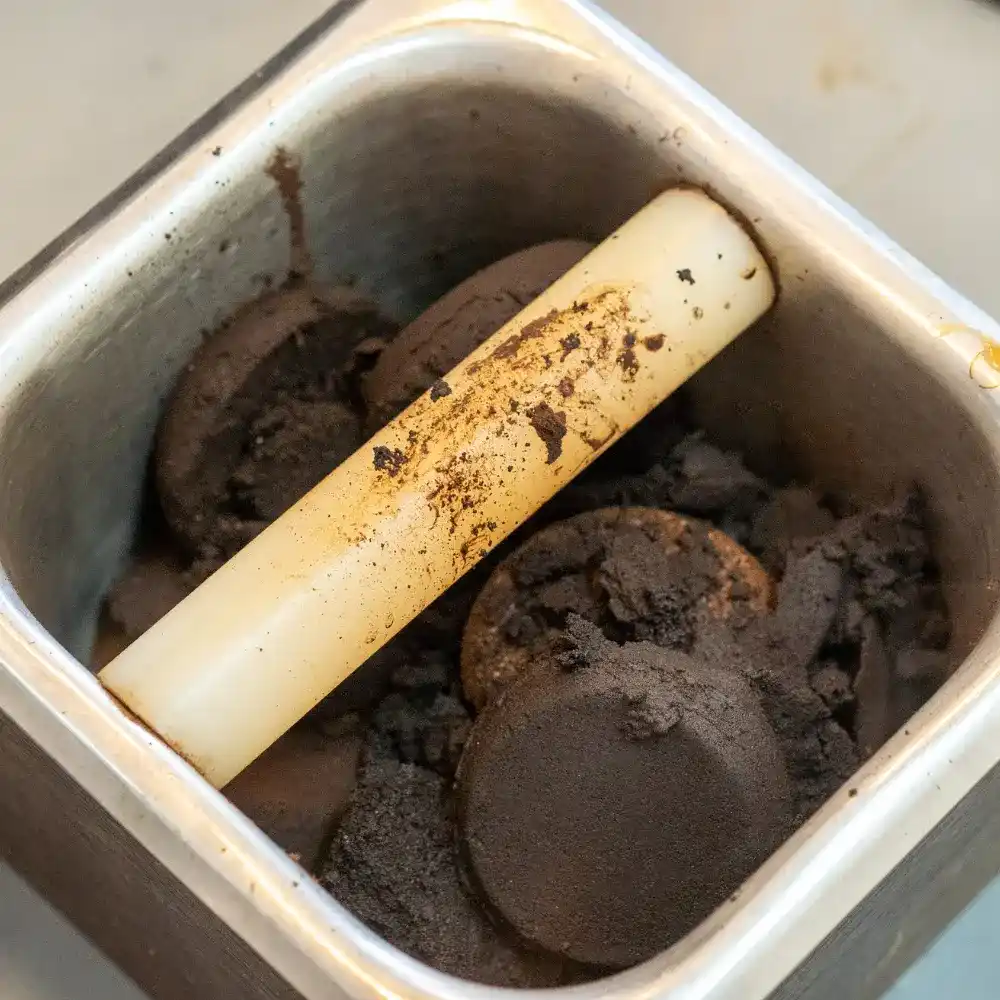
The last concern revolves around balancing the environmental benefits of reusing coffee grounds with flavor trade-offs. Indeed, re-brewed coffee tends to have a milder flavor profile and lacks some of the robustness and complexity of the first brew. However, this doesn’t necessarily mean it’s unpleasant—some people might even prefer the subtler flavors.
Moreover, considering the environmental benefits, this trade-off could be seen as a small price to pay. Reusing grounds can help reduce waste and lower our carbon footprint, both of which are crucial in our efforts to live more sustainably.
Understanding these common concerns can help you make an informed decision about reusing the grounds. With the right precautions and expectations, you can safely enjoy a second brew while taking a small step towards a more sustainable lifestyle.
So, Can you Use Coffee Grounds Twice? – Conclusion
In answering the question, “How many times can you use coffee grounds for coffee?”, we’ve explored the world beyond our initial brew. While it’s generally agreed upon that coffee grounds can be reused once without significant loss in quality, factors such as the type of coffee beans, storage methods, and brewing adjustments can influence the results of your second brew. Beyond simply making another cup of coffee, spent grounds have a variety of alternative uses and potential for creative and sustainable applications.
Reusing grounds, in essence, is not just about extracting every last bit of flavor or caffeine from them. It’s also about embracing a more sustainable lifestyle, reducing waste, and finding innovative solutions to everyday items. From skin scrubs to composting, from local partnerships to recycling programs, each of us can contribute to a more sustainable coffee culture.
The journey that begins with the question “How many times can you use coffee grounds?” leads us to an exciting realm of possibilities, shifting our perception of what we consider waste. So next time you finish brewing your coffee, remember—your used grounds might still have a lot to offer. Here’s to maximizing your brew and reducing waste, one cup at a time.
FAQ
How does the flavor change when using reused coffee grounds?
Reused grounds yield a milder brew, often lacking the robustness and complexity of flavor found in the first brew.
What are some creative uses for spent coffee grounds?
Spent grounds can be used in a variety of ways, including as a DIY coffee scrub, a compost additive for gardening, and an odor-neutralizing cleaning solution.
How can I reduce waste and practice sustainable coffee consumption?
You can reduce waste and practice sustainable coffee consumption by reusing or composting your grounds, partnering with local farms, and participating in coffee ground recycling programs.
Are there any concerns or misconceptions about reusing grounds?
Common concerns include the risk of mold and bacterial growth in reused grounds, the impact on caffeine content, and balancing the environmental benefits with potential flavor trade-offs.













